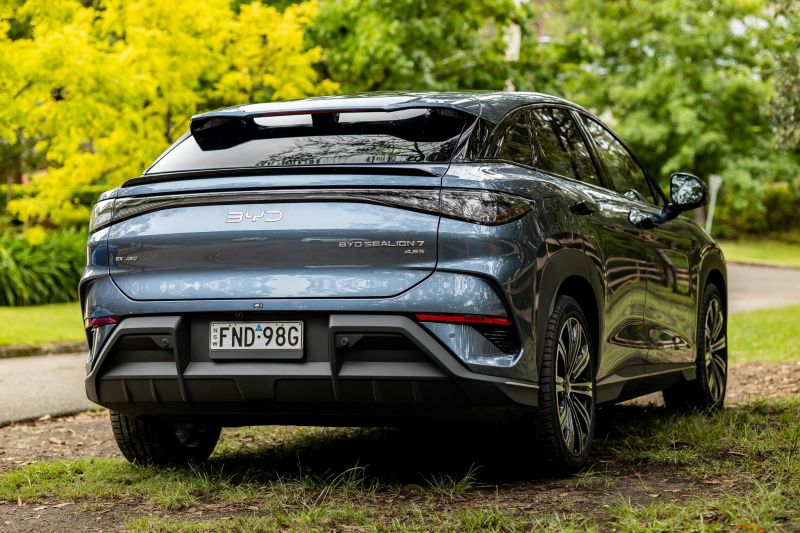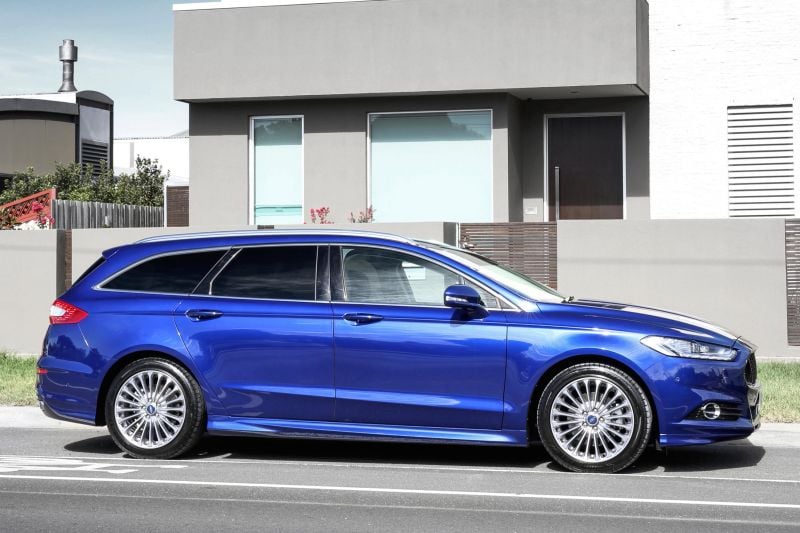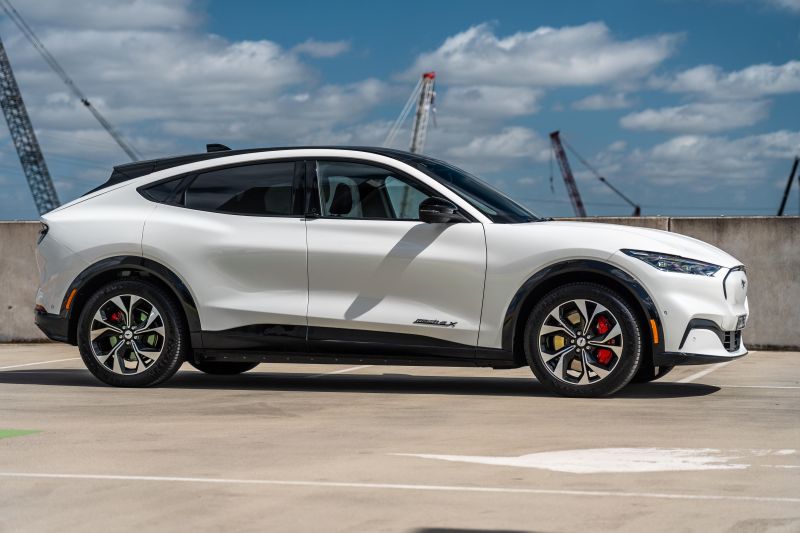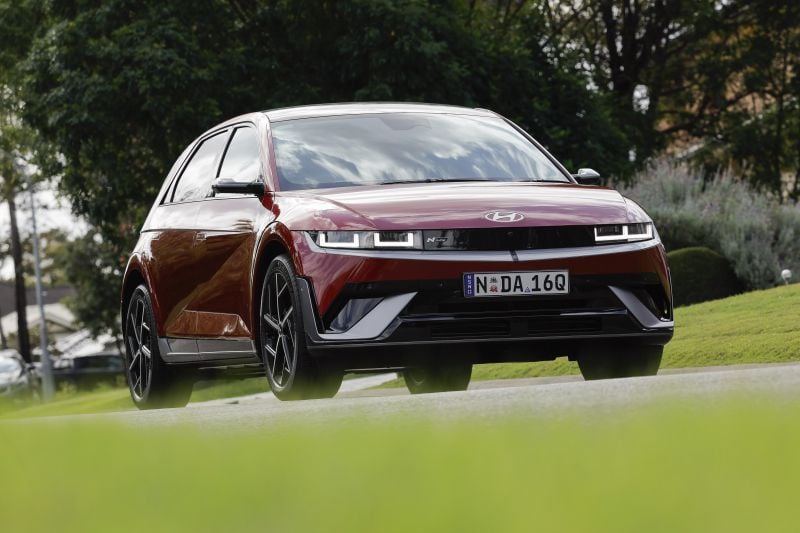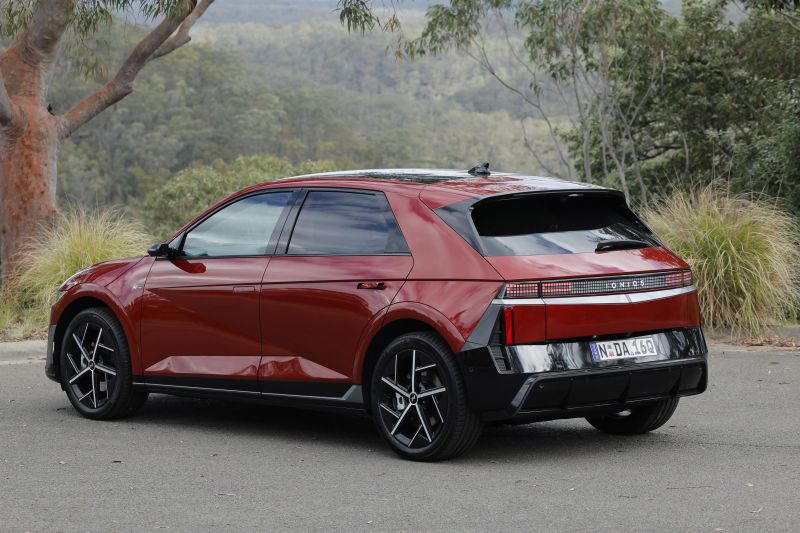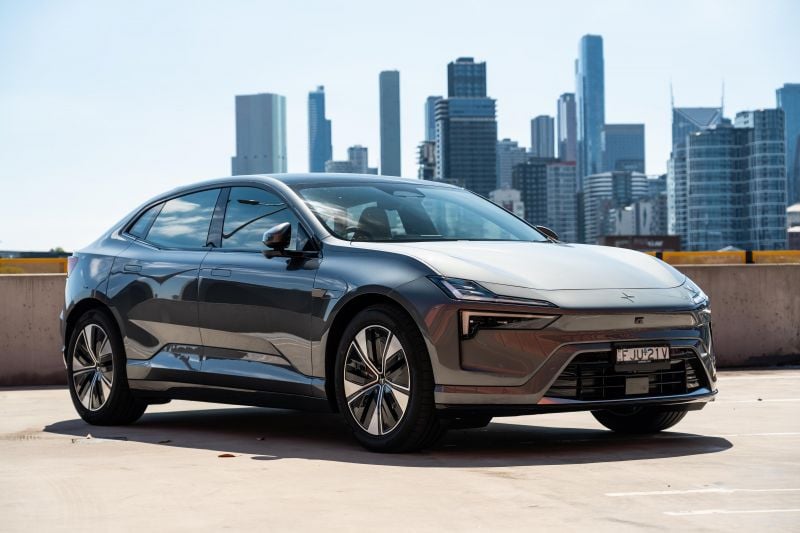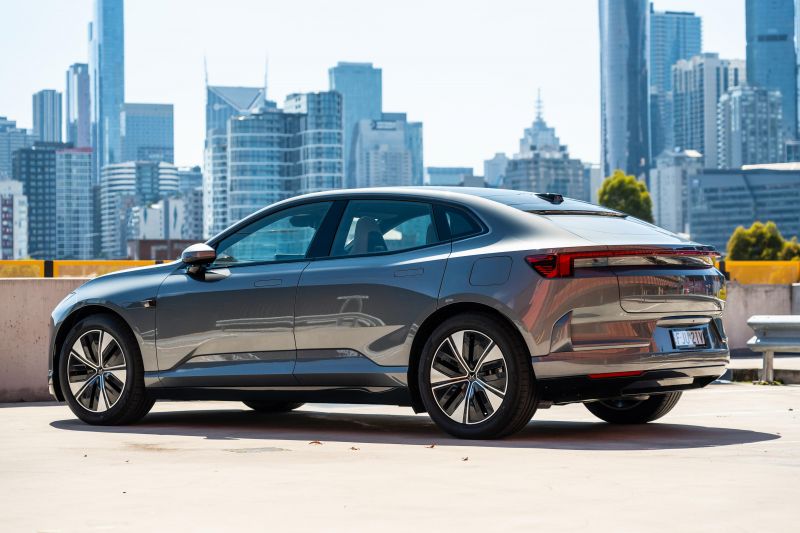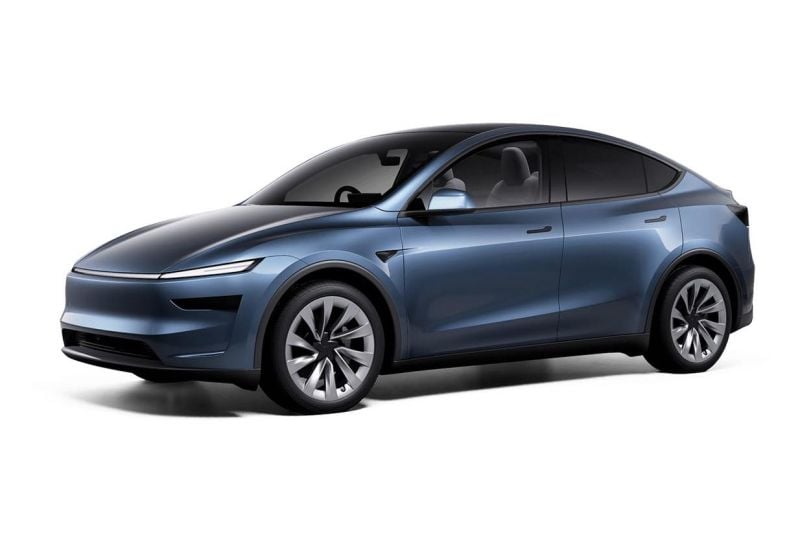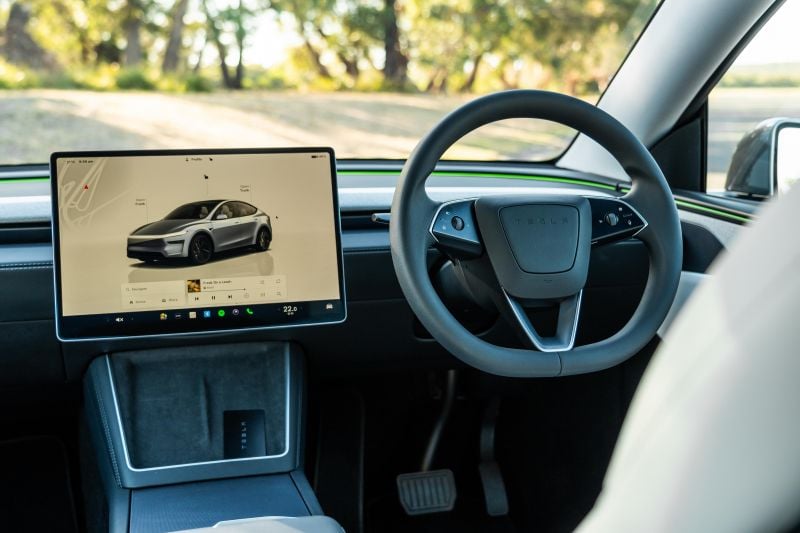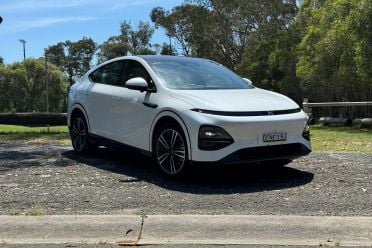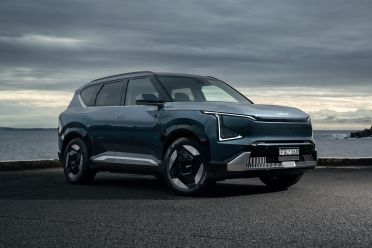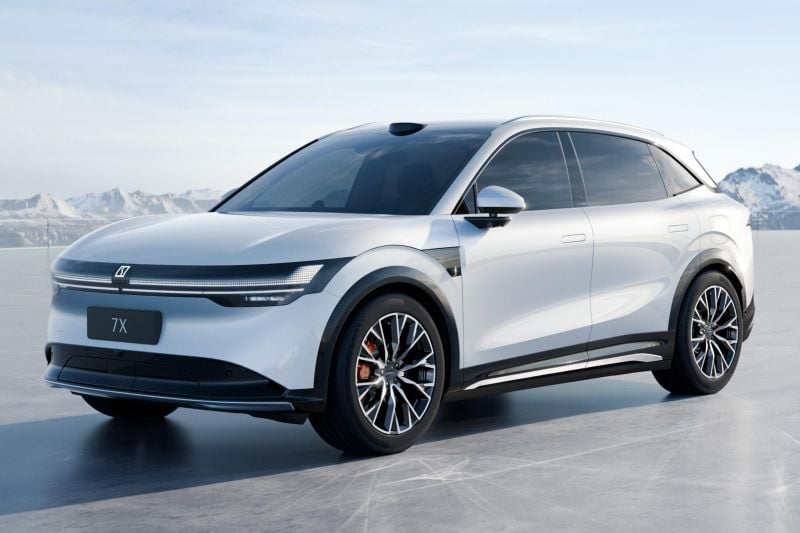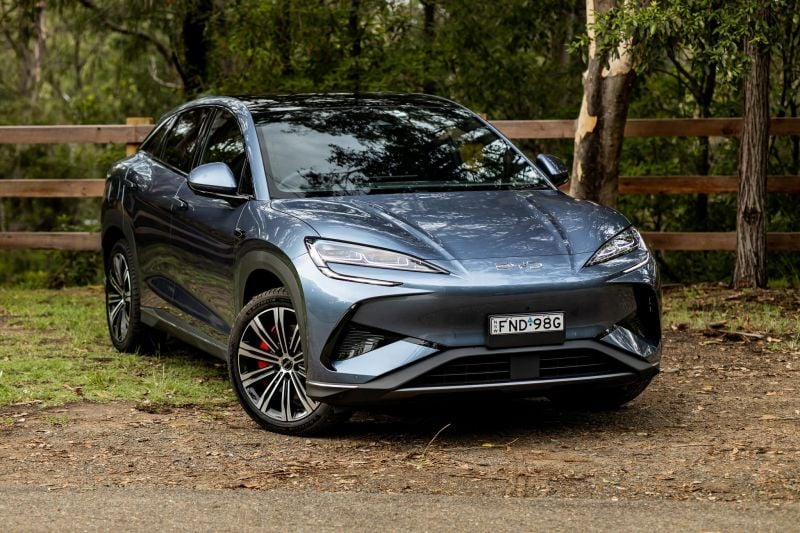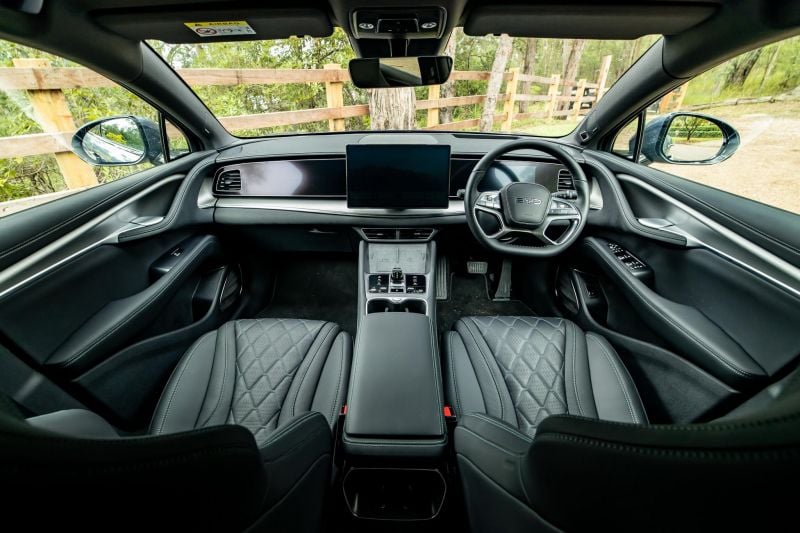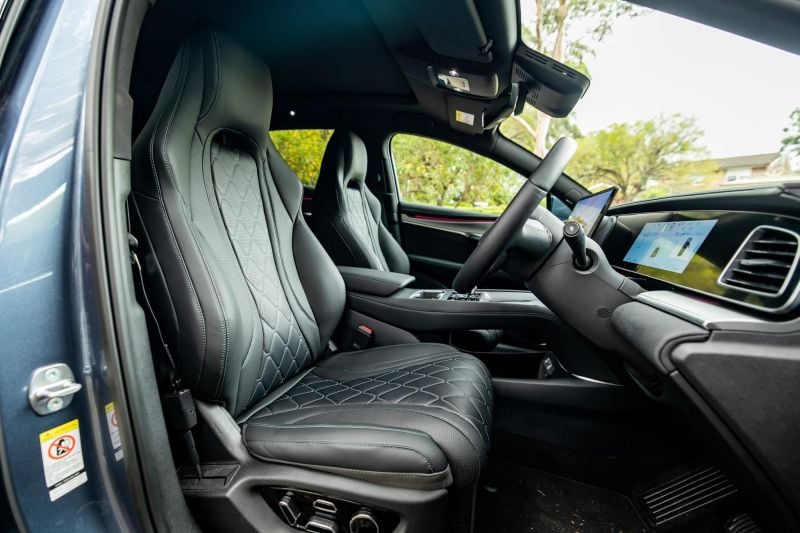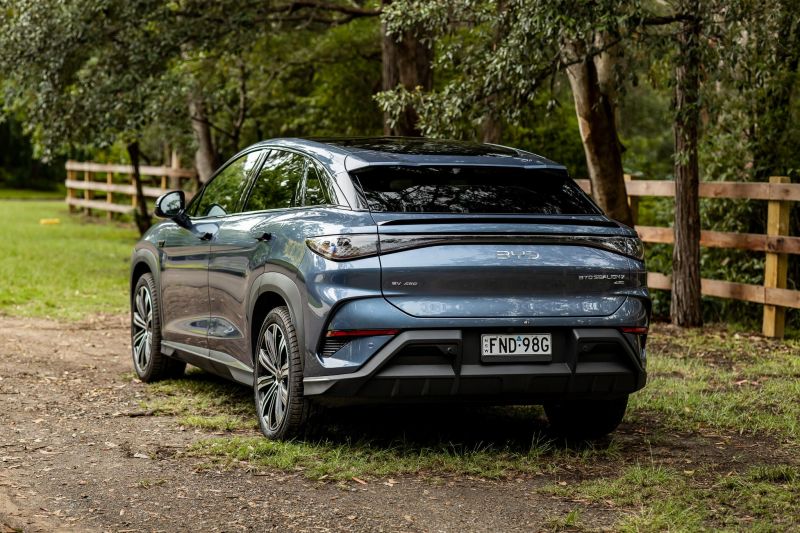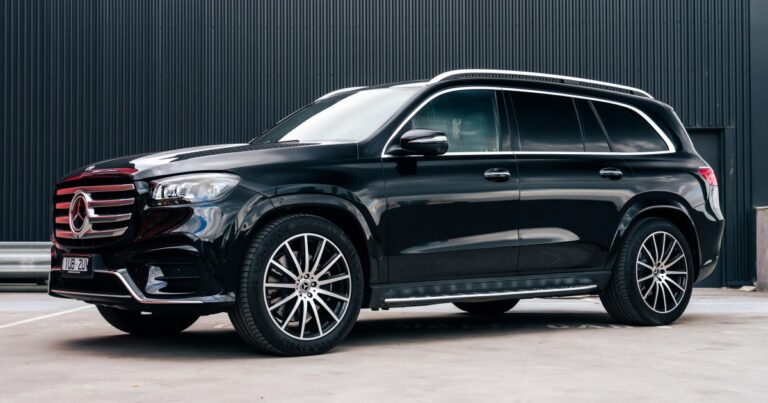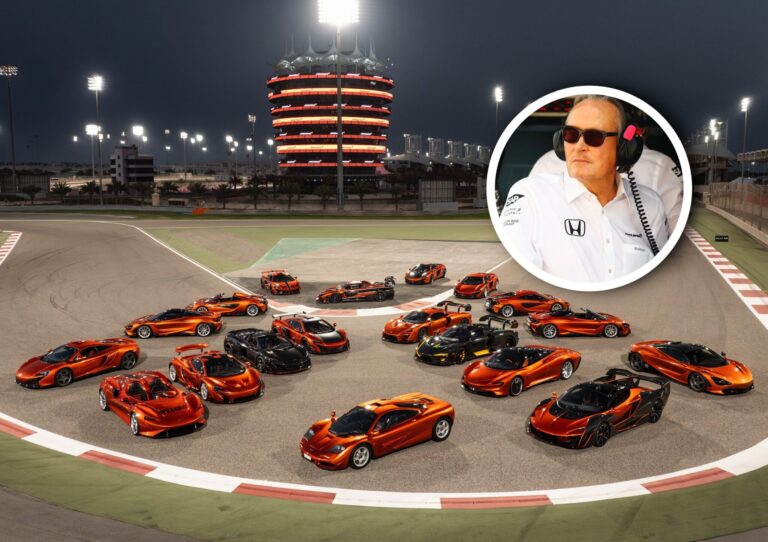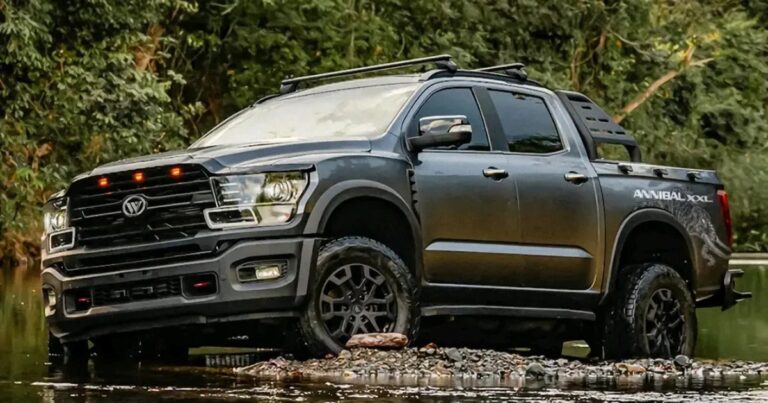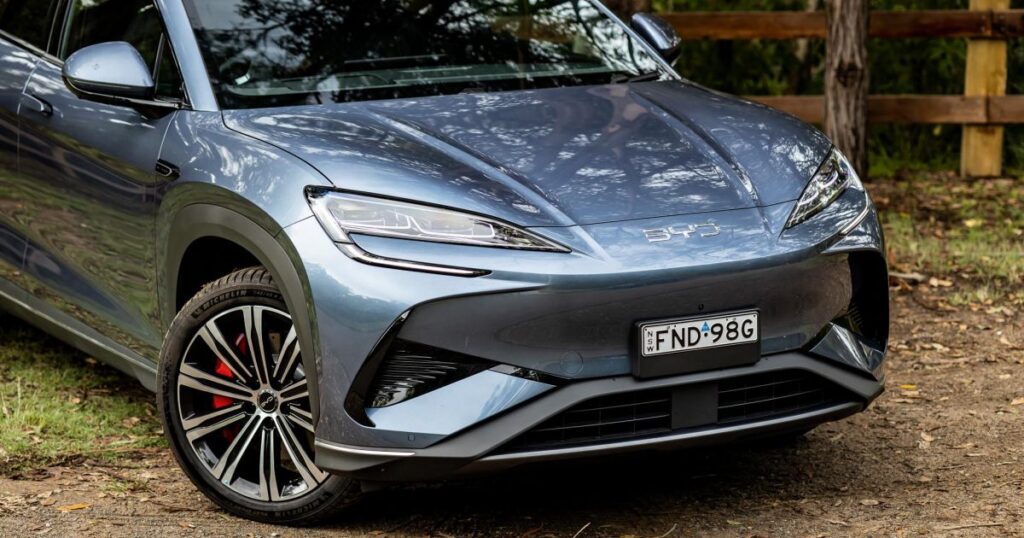
Can a new Chinese electric SUV replace our diesel Ford wagon as a family car? That is the question.
My wife and I have chosen to novate lease a BYD Sealion 7 AWD. The BYD is our first leased vehicle and our first SUV.
We chose the Sealion 7 after carefully considering the competing electric mid-size vehicles.
Just like any car buyer, we have our own unique circumstances and requirements. The new vehicle needed to match these, and in a perfect world the new car would be at least as good as our old family car.
First, I’ll explain why we chose to lease, then cover what attributes we wanted from our new vehicle. Next is a brief look at each of the main contenders in the electric mid-sized SUV market.
All cars were test-driven between mid-February and April at dealers like any normal car buyer – meaning we didn’t have them for a couple of weeks as press review vehicles.
In a couple of months’ time, I will write about how well the car has met our needs in a CarExpert Owner Review. So, after reading this article and then our owner review, you should have a good ‘real-world’ example of whether a family-sized EV can replace an equivalent ICE vehicle in suburban Australia.
Why leasing?
No one wants to pay more tax than necessary, and this is the main reason why we chose to novate lease an EV.
Although you can save money leasing a conventionally powered car, the present FBT exemption rules for EVs leased under the Luxury Car Tax threshold increase those savings dramatically. This makes choosing an EV an easy decision if you are a wage or salary earner with an employer that has links with leasing firms.
For qualified vehicles all the lease payments come out of your pre-tax income. This means you get an electric car – which will typically have much lower running costs than a combustion vehicle anyway – and pay less tax.
In our own case the savings amount to $40,000 over the three years of our lease. This means it will cost the same to lease the feature-packed $70k 390kW AWD Sealion 7 (including insurance and all on-roads) as it would driving home in a new base model $38k 115kW FWD Mazda CX-5.
Leasing is not the right choice for all, however, so you should consult independent financial advice before making any big automotive decisions.
What we wanted in our new car
In short: space, comfort and features.
For over 10 years a Ford Mondeo Titanium 2.0L diesel wagon has been our family car. At 483cm long and just under 190cm wide it is at the upper end of the mid-size class.
The Ford in turn replaced our Saab 9-5 wagon (wagons are good) and the Mondeo features a massive 800+ litre boot, making for easy family road trips to see relatives in Northern NSW.
The Mondeo has also served as transport for a giant dog – our now 11-year-old Great Dane. Other duties, beyond regular school and work runs, include towing large trailer loads of garden waste to the tip (Mondeo is rated for 1600kg braked) and using the vast interior space for runs to IKEA and Bunnings.
We have two growing teenage boys (presently 6ft 4 and 6ft 1), while my wife is the shortest in the family at 5ft 11.
This means decent interior space, especially rear legroom, is important. AWD would be preferred too. Ventilated seats would be nice here in QLD and a decent sound system is mandatory. I used to work for Len Wallis Audio in Sydney and wrote for Hi-Fi magazines for 10 years – so I’m more than casually interested in sound quality.
The Contenders
Ford Mustang Mach-E Premium
My wife liked the look of the Mustang Mach-E, and we have had many Fords before, apart from the Mondeo.
For $90k including on-roads the RWD Ford had a big battery, a long range and decent quality B&O sound system. Like most Fords we also knew it would steer well.
The road test revealed a well-built car that did steer nicely and handled OK but had no tow rating or an AWD option under the LCT limit. The seats were flat, not particularly supportive, and ventilation wasn’t an option.
Overall, the interior did not feel like that of a $90k car. In the rear there were no USB ports, while legroom was the same as the Mondeo at a reasonable 38” but the boot was small at 400 litres. At least the Ford had a big frunk.
At the time of testing, I had already read about the facelifted version in the US, which had better equipment and pricing, and realized this model would be in runout mode soon so our next car wasn’t going to be another Ford.
Hyundai Ioniq 5 AWD
I’ve always liked the retro-futuristic look of this giant hatch, but my wife was not so sure.
It has strong points, like class-leading DC charge speeds. You need the right charger, though.
The Ioniq 5 also boasts a spacious interior. With an extra inch of rear legroom over the Mach-E, the Ioniq 5 makes good use of the huge 3m wheelbase.
The comfortable ride quality was a bonus, as was the AWD power and traction on the wet roads on the day of the test drive.
Tow rating was a healthy 1600kg, the car was quiet inside, and the Bose sound system was fine, without being outstanding in any respect, but was inferior to the more refined Meridian system I had previously heard in the Kia EV6.
The EV6 itself was already out of the mix, despite its great driving characteristics, due to a smaller boot and less rear headroom than the Ioniq 5.
Most of the Hyundai’s nagging driver aids had been kindly turned off by dealership staff before I sat behind the wheel, so I can’t comment on my own experience with them.
Ventilated seats were only an option on the top Epiq model, which just falls under the present LCT limit. The AWD models have a tiny frunk but at least the boot was 520 litres.
Styling and value and a long wait-time for a fresh order harmed its chances the most.
Polestar 4
Easily the most distinctive and stylish car in the group, this car also had the most impressive interior.
It sports a big 100kWh battery and a WLTP range of over 600km. Charging speeds are good too, maxing out at 200kW.
Build quality was also high inside and out. I was not so sure about the absence of a rear window. In time we would probably get used to it – but would prefer a normal rear window.
Rear legroom was fair, being the same 38” as the Mach-E and our old Mondeo, but toe room was less due to the lower roof height of this vehicle design. Boot space was similar to the Ioniq 5.
Braked tow rating was a strong 1500kg on the RWD and 2000kg on the AWD. Despite this we only drove the 200kW RWD, as the 400kW AWD was priced beyond the LCT threshold if you ticked any options boxes.
This was the unfortunate thing with this car; its ‘Euro-style’ pricing kept the modern desirable features as options. To specify the cheaper RWD car adequately, but still with no ventilated seats for example, took the vehicle price to just under the LCT limit. This is a long way from the listed base price of $78k before on-roads.
In terms of how it drove, it was very quiet and quite refined. However, for a car from the brand that used to be the ‘AMG of Volvo’, it was not remotely sporty. Driving it just after the Hyundai AWD made the RWD Polestar 4 feel slow and heavy.
I was also surprised that for a company with such a strong environmental and health and safety focus, Polestar only included a PM2.5 filter for those that ticked one of their options boxes. These fine filters can prevent tiny particles of diesel from entering the cabin – and your lungs.
Nobody loves diesel soot, but in case you didn’t know, in 2012 the World Health Organisation and the International Agency for Research on Cancer classified diesel exhaust as a Group 1 Carcinogen. This means it has been proven to cause lung cancer in humans, just like cigarette smoke and asbestos.
Only including the filter as part of an optional package is almost as bad as the old car manufacturers’ practice of charging buyers extra for a ‘safety pack’ that in an accident could mean the difference between life and death for less well-off purchasers.
Tesla Model Y AWD
The world’s best-selling car for the last two years is the industry benchmark and segment leader.
We had previously owned a Tesla Model 3 for four years, bought when they first became available in 2019, so were familiar with their strengths and weaknesses.
Just before a holiday in late summer we placed an order for the Launch Edition AWD Model Y. Although we hadn’t driven the new version, we felt confident it would meet our needs.
The new Y had a combination of generous 40.5” rear legroom and class-leading features and technology (including the best automotive app on the market), a fantastic sound system, and full access to the best charging network in the world.
The Y was also rated to tow 1600kg, and this was the only car to have more total cargo space, including frunk, than our old Mondeo.
Reported improvements in build quality and ride quality and the circa 500km range were also drawcards, as were the cooled seats. On-road pricing (with the options we picked) was going to cost a little over $80k.
Negatives for this car include the poor four-year, 80,000km bumper-to-bumper warranty, price variability and the typical austere Tesla cabin.
Same as our previous Tesla, there is no HUD or dedicated driver display, but with the new generation Y you also lose the gear shift column too. We tried to ignore the CEO’s foray into politics but in our Canadian holiday Elon Musk and President Trump were in the news every single day.
The cars we didn’t test
There were other cars in this class that had several positives, but we didn’t shortlist them. For some buyers, however, they may be perfect.
The Volkswagen Group vehicles are getting good reports in terms of their build and driving quality but were missing features important in 2025 – like in-built satellite navigation and phone app connectivity. Towing limits were also lower by a few hundred kilograms, and most were simply smaller than what we were looking for.
The Kia EV5 also had lower tow ratings than ideal for our use, while the BMW iX3 was well-appointed, and would have driven well, but its less spacious interior and the fact that the Neue Klasse iX3 is soon for release ruled against it.
The Xpeng G6 appears to be a quality EV and has many strengths but for us the biggest weakness was its inability, at the time of our shortlisting, to charge at Tesla’s Superchargers. No access to the world’s best charging network was a dealbreaker.
Another factor against Xpeng, and most of the other more recently arrived Chinese brands, was their smaller presence and support network in Australia.
Despite this, one car I wanted to drive, if it had been in the country, was the Zeekr 7X. It looks very well specified and is a proper family-size car. Anyone in the market for vehicles in the mid-sized electric segment later this year should shortlist the 7X and also check out the incoming IM models from MG.
Our pick: BYD Sealion 7 AWD
One car we had not been able to drive before our holiday was BYD’s newly arrived Sealion 7. We finally drove both the new Y and the BYD in April after our return.
Driving the BYD confirmed what the CarExpert launch review had found: this was a very spacious, well-built and well-equipped vehicle. I estimate rear legroom was near 42” and the leather seats were very comfortable.
The 520-litre boot was a similar size to competitors, but the BYD also had a useful 58-litre frunk as well.
Interior finish quality was high, and the doors closed with a thunk that reminded me of the 2021 Mercedes-Benz E-Class I used to drive a couple of years ago. The BYD was quieter than the new Y and seemed equal at city speeds with the impressive Polestar 4 which was in my experience almost as quiet as a Mercedes-Benz S-Class.
When it comes to the dashboard, the Sealion 7 has all the bells and whistles that Tesla buyers forgo. It has two stalks and several hard buttons in addition to the huge information screen. There is also a large instrument display and full-featured HUD.
The AWD BYD was rated to tow 1500kg and even had the same performance as the Launch Edition AWD Tesla. This means overtaking confidence and effortless on-ramp mergers. The power of either car is also a legitimate legal excuse to keep our eldest P-plater son from the driver’s seat.
In short, the AWD Sealion 7 is a fair match for the AWD Y, and is even 483cm long just like our Mondeo, so we knew it would fit in our garage.
Driving the Y confirmed that Tesla really had improved interior finish and overall build quality. The doors also shut solidly for a frameless design. The Tesla cornered better during the test drives, and with its heavily refined suspension, had a slightly superior ride.
The AWD Y boasted very refined audio quality and was definitely the pick of the two sound systems but the BYD was still an impressive performer with a clean deep bass response.
The Tesla was much more efficient, which meant it could go further on a charge. It could also DC charge at a higher average speed. However, traditional EV performance metrics were not so important to us. Our occasional road trips were still within the range of the BYD battery so this wasn’t the dealbreaker it might be for some.
Furthermore, a closer look at the charge curves of the two cars indicated the BYD’s charge speed from 10-80 per cent was not far behind the Tesla’s, despite a lower peak rate. This meant that a typical DC charge session should only take a little over five minutes longer.
BYD’s assisted driving features and overall software performance struggled in comparison to the Tesla.
The Chinese brand isn’t unique here; almost all other automakers struggle against Tesla in software; and Tesla’s own is still far from perfect. At least you could easily turn the ADAS features off in the BYD via a screen shortcut.
Unlike some other competitors at least the BYD has a phone app allowing you to remotely access the climate and cooled seats – but it lacks the polish of the slick Tesla equivalent.
Finally, BYD has a much better warranty than the Tesla and a $10k lower price than the Lauch Edition we had specified. This meant that monthly ‘take out’ payments for the fully maintained lease were just under $1000 while the Y’s were over $300 more.
Our family has another major purchase looming later in the year so BYD’s value for money appeal, combined with its overall quality, was too strong to resist.
Stay tuned for the CarExpert Owner Review to see whether the Sealion 7 can effectively replace our Mondeo – or if we end up regretting our choice!
MORE: Explore the BYD Sealion 7 showroom
